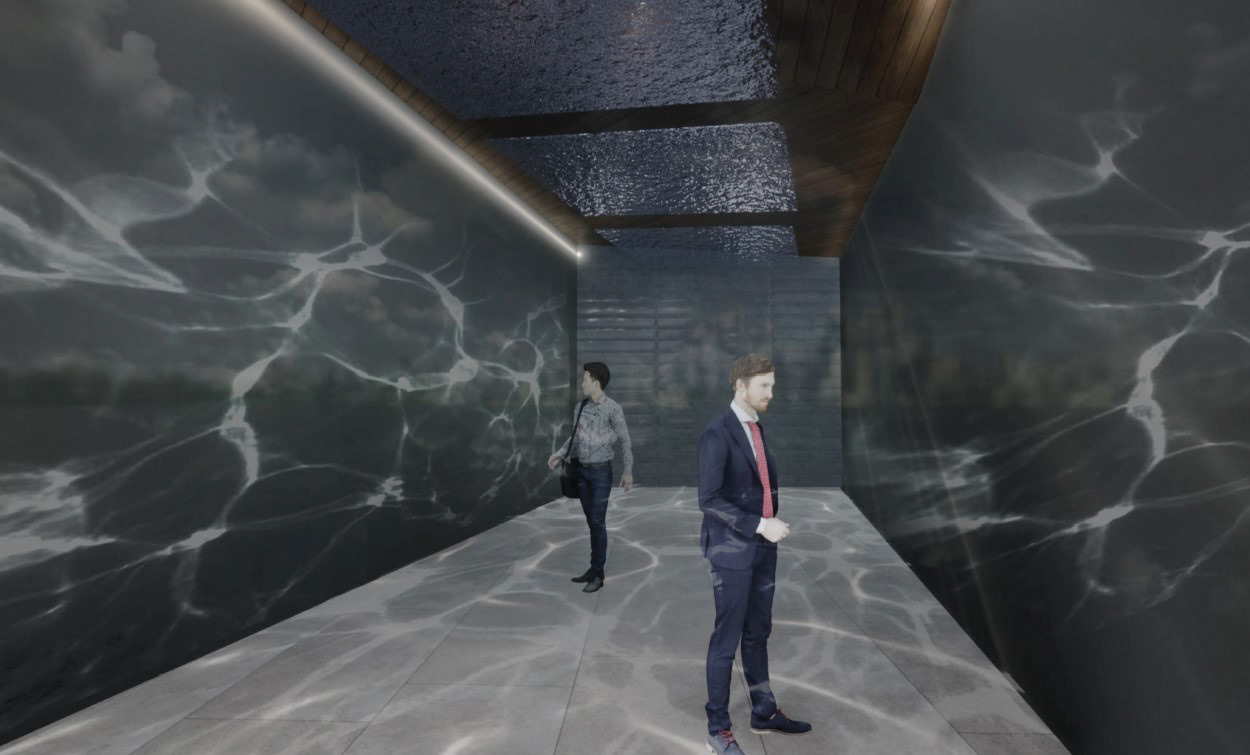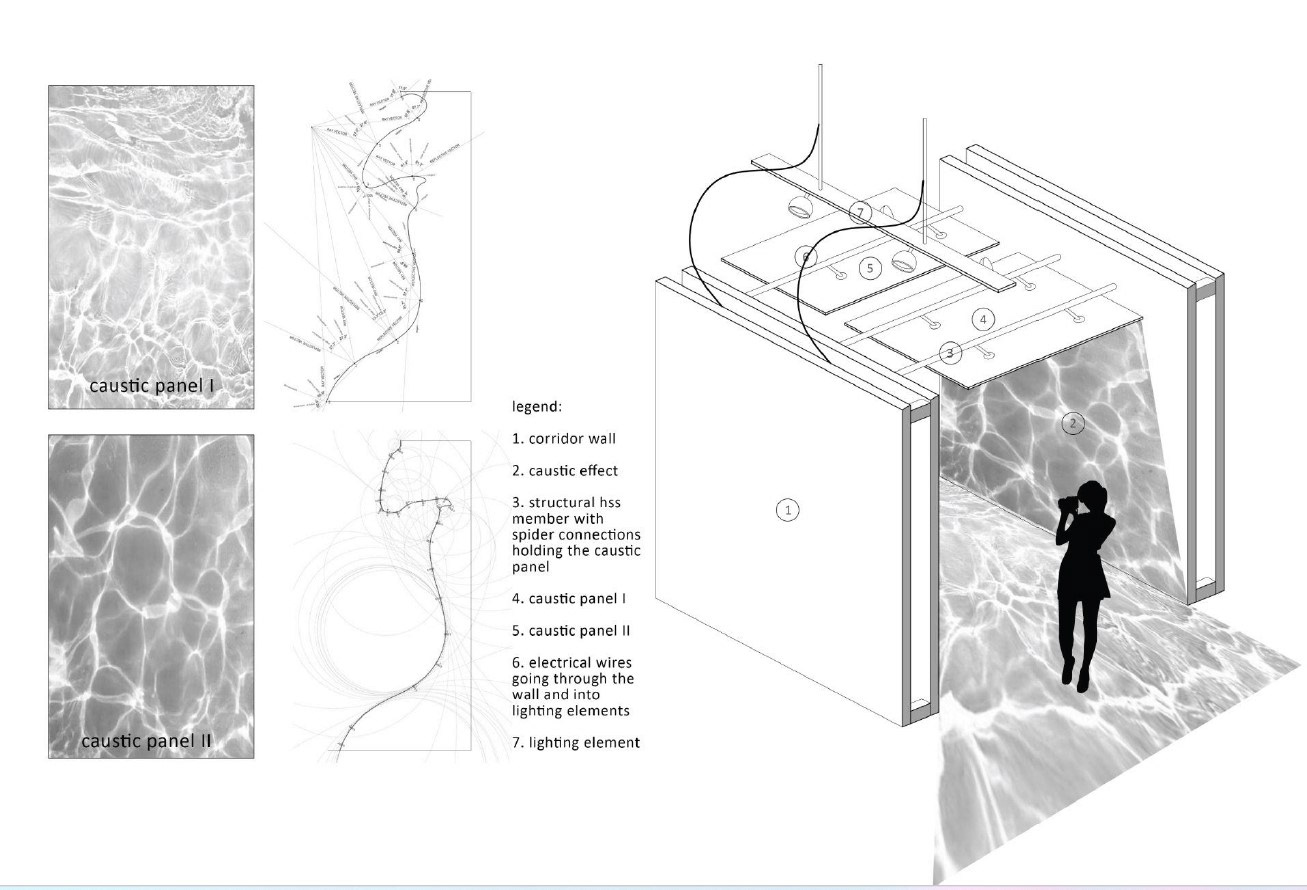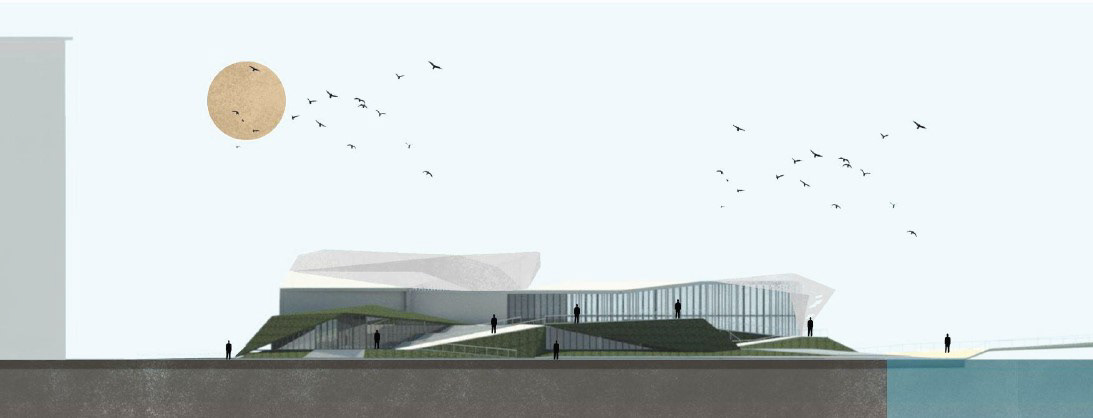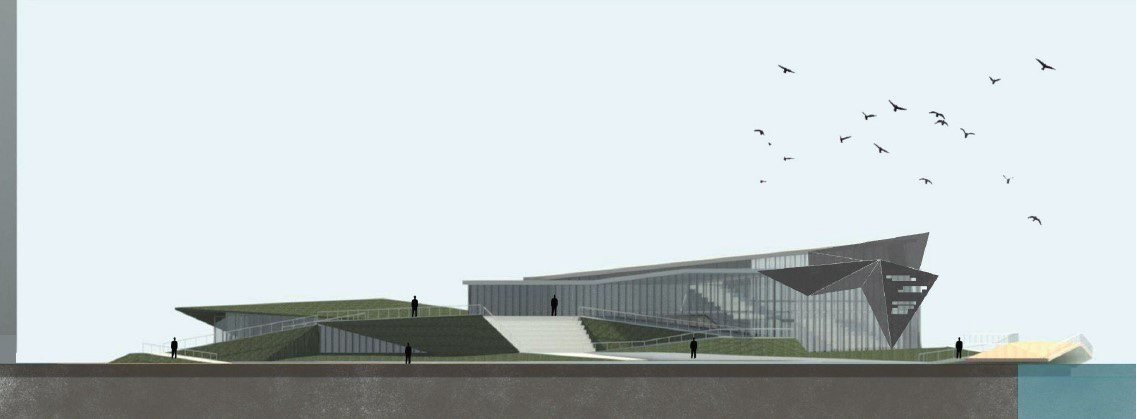The presence of Lake Ontario has recently become assumptive, and the reality of living by the edge of the water has been implicit by the residents of the area. Furthermore, visitors of the lakeshore and occupants of the surrounding spaces have lost the sense of wonder and the connection to water. The design aims to rejoin visitors with the charm of the great lakes, and it aspires to emphasize the sensation of being immersed in the transformative environment of water and light. From that idea, the formation of waterklasma utilized the organic and non-organic elements and patterns of the site, especially light and water, caustic refractions, and rippling effects. The intersection of light and water through those patterns creates a mesmeric spatial experience that resembles the sublime of the great lake.
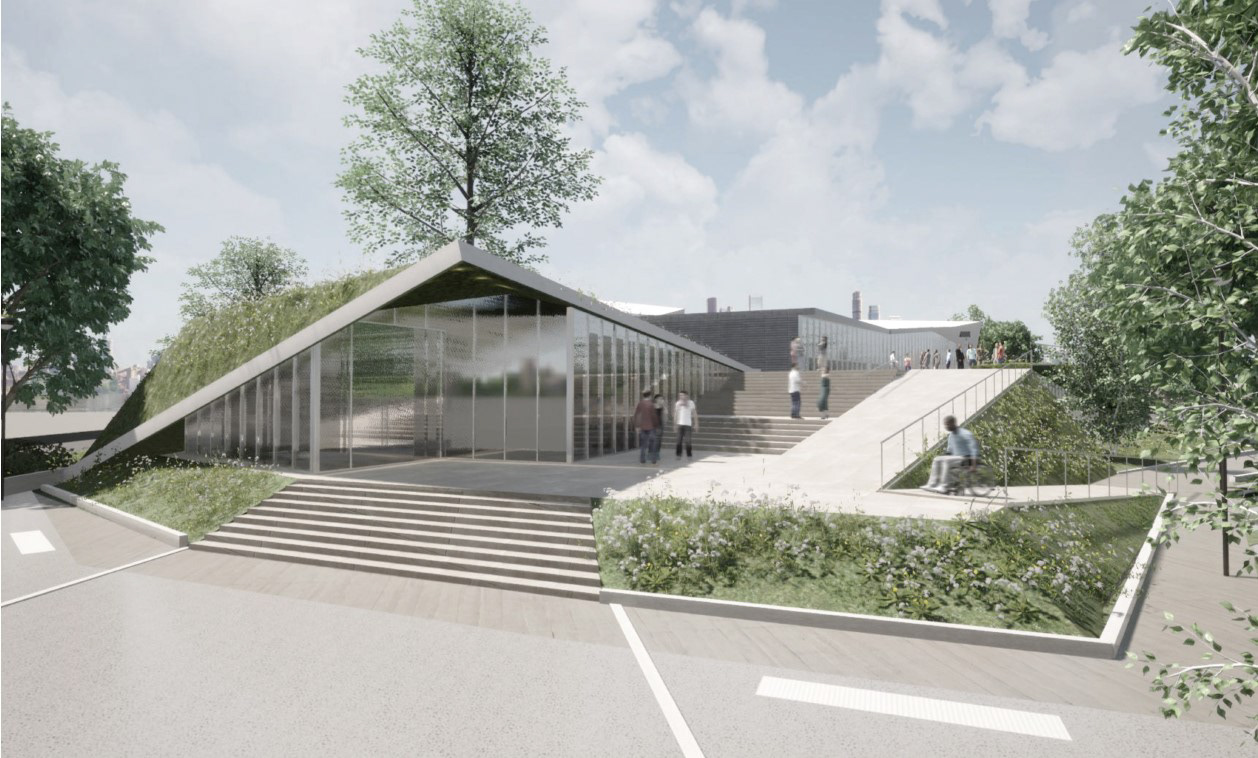
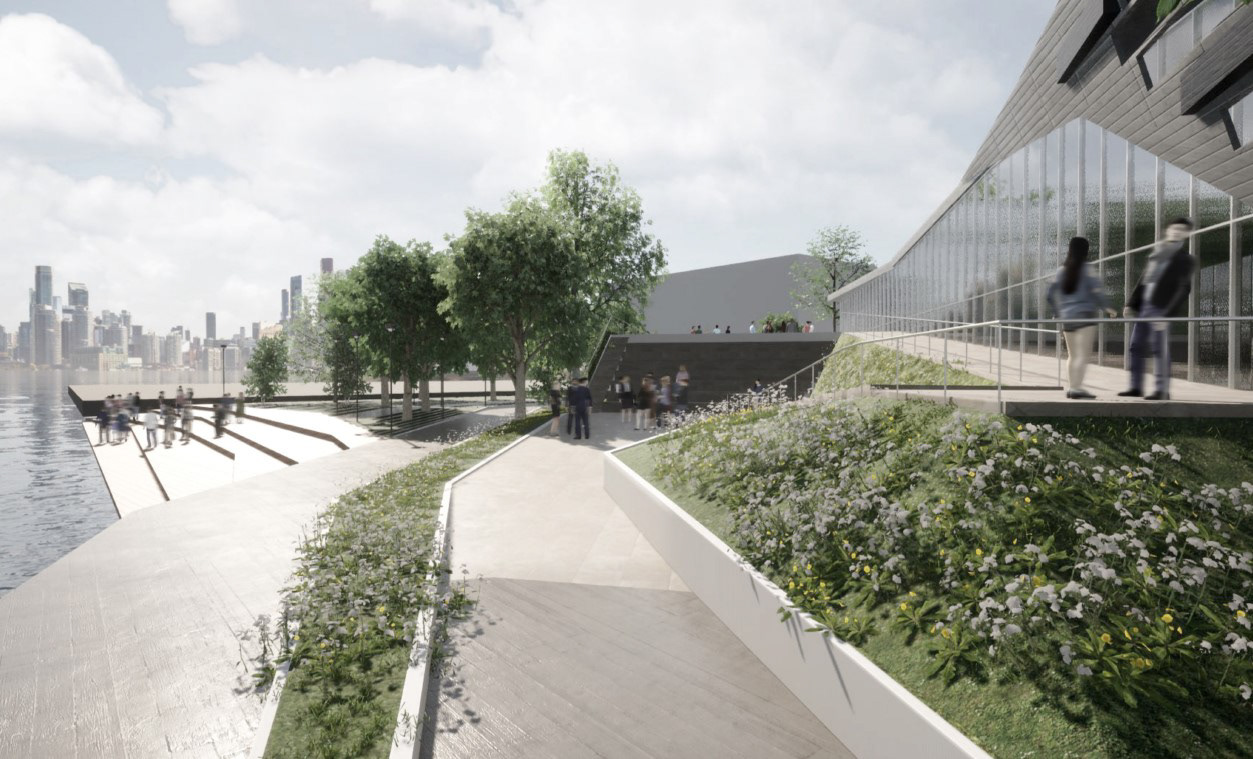
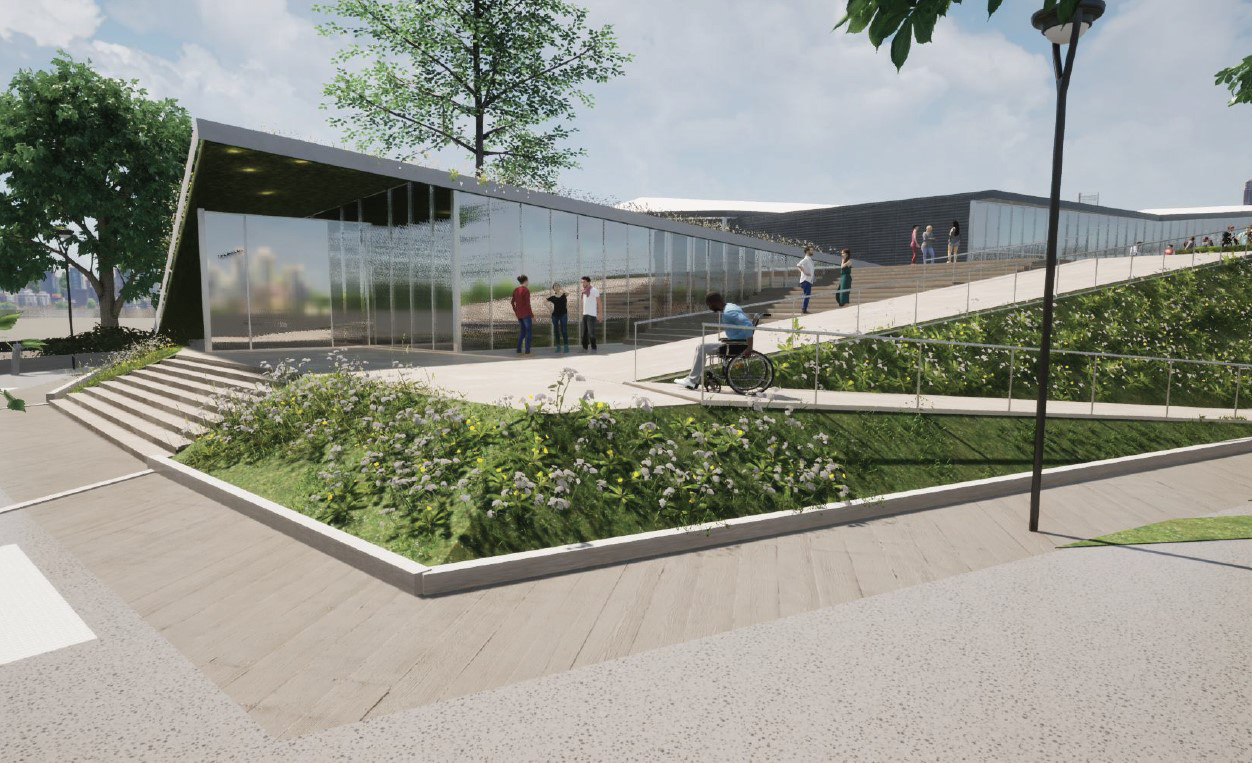
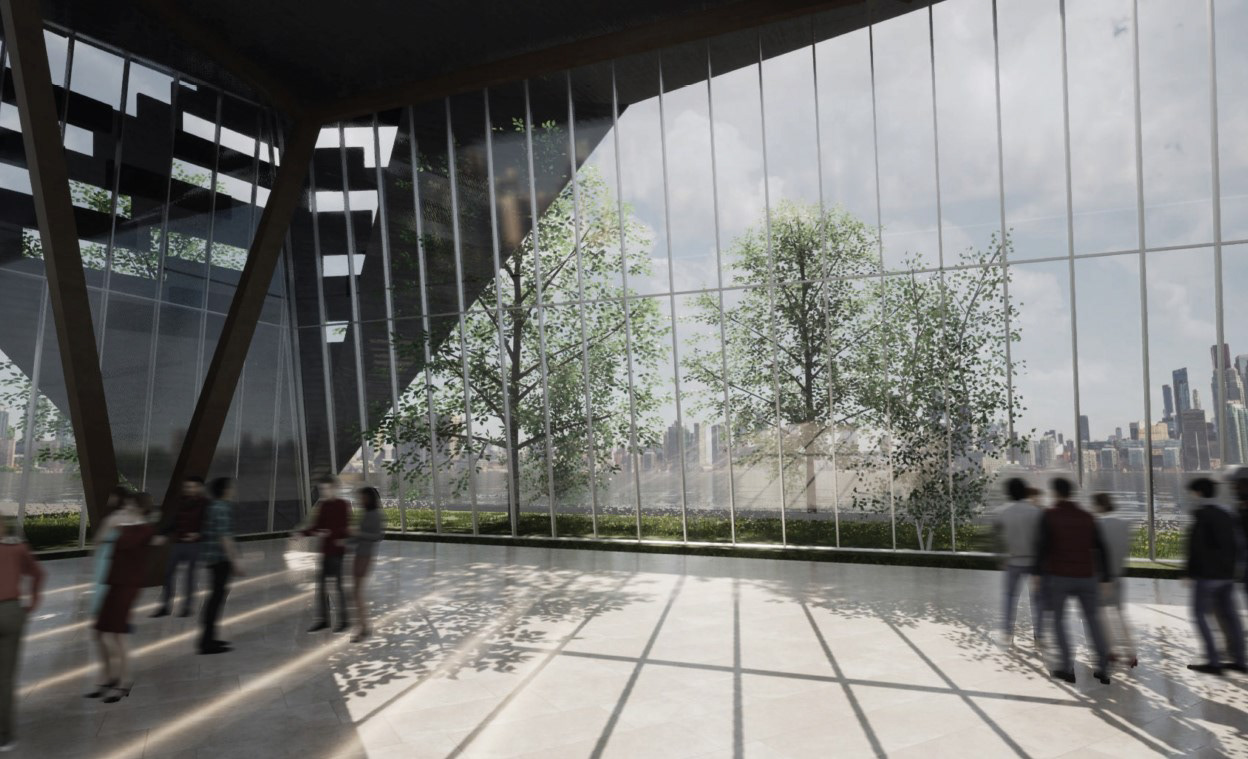
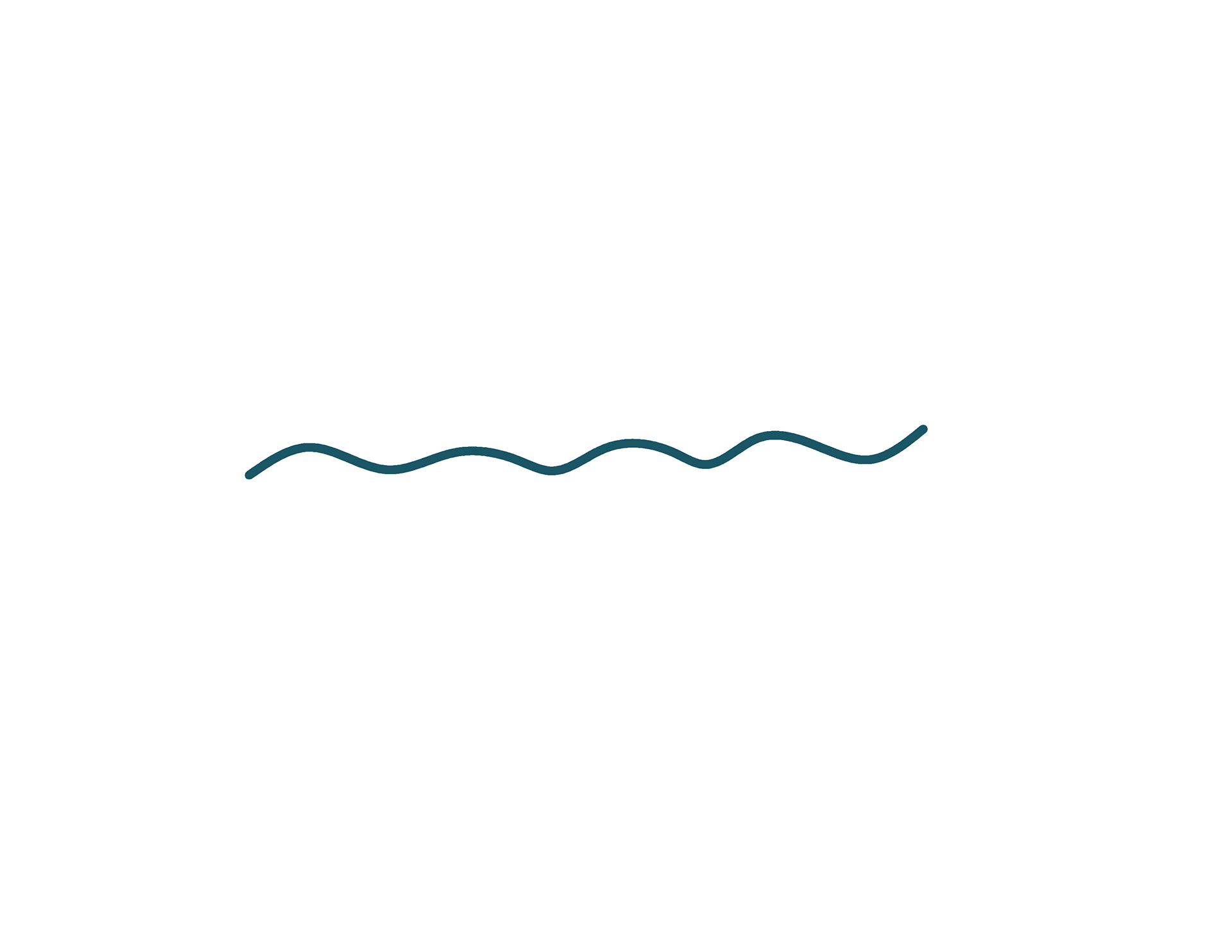
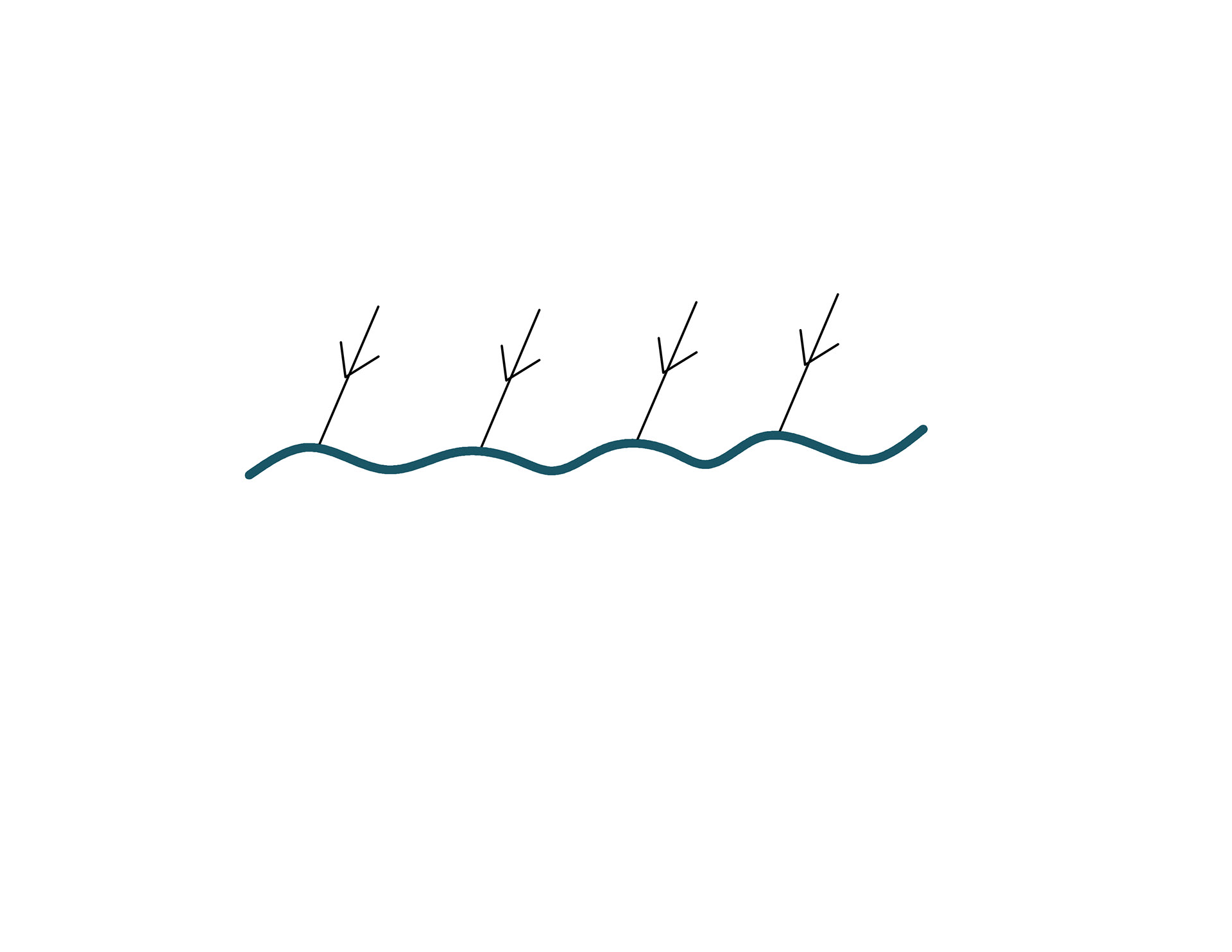
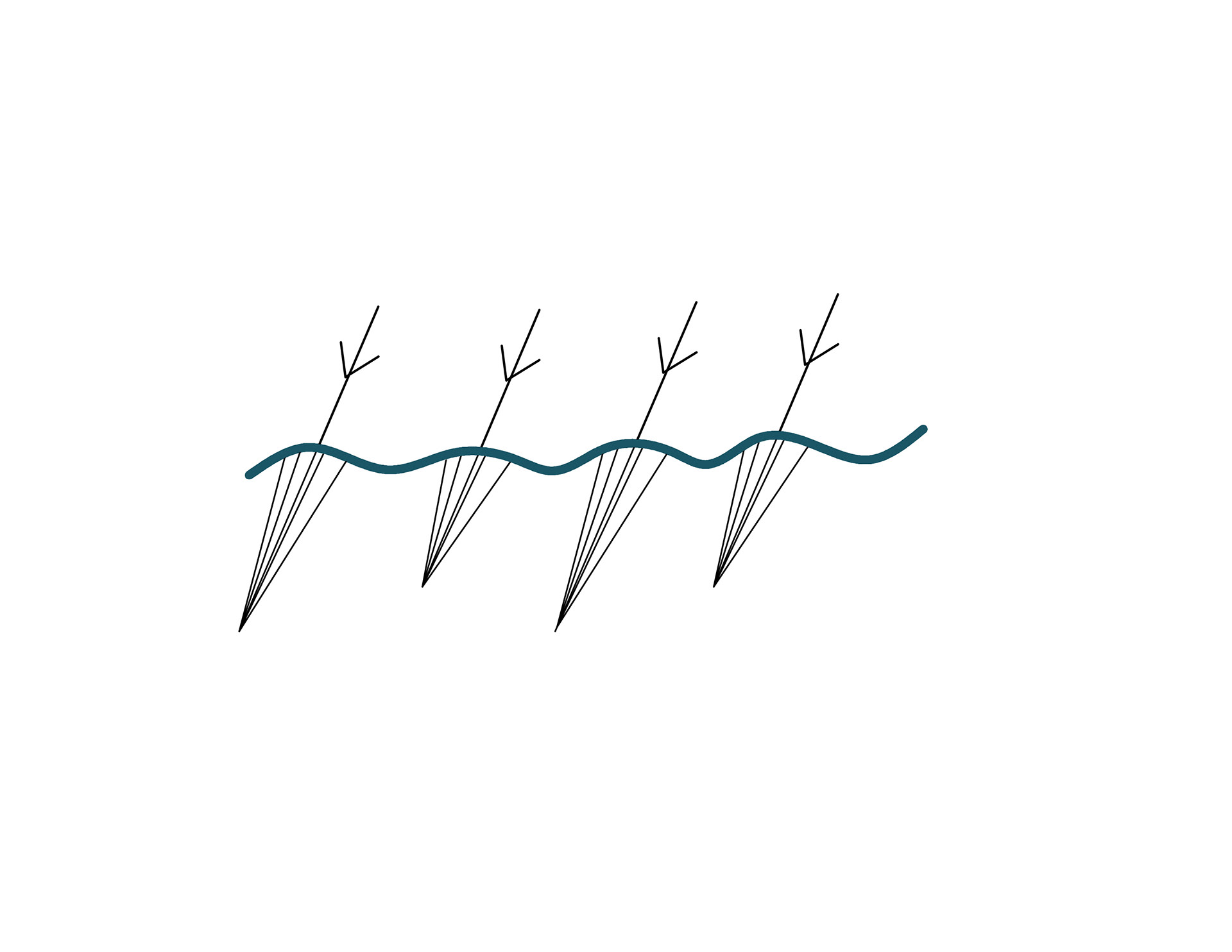
The words waterklasma was found by merging the words water and refraction, means the reflection the light on the surface of water.
“Caustic” is the main idea of concept of this project. The water has a curved and dynamic surface, when multiple sun rays hit the surface of water. Instead of directly reflecting them, the water breaks the sunlights and reflects those lights multiplying them.
“Caustic” is the main idea of concept of this project. The water has a curved and dynamic surface, when multiple sun rays hit the surface of water. Instead of directly reflecting them, the water breaks the sunlights and reflects those lights multiplying them.
